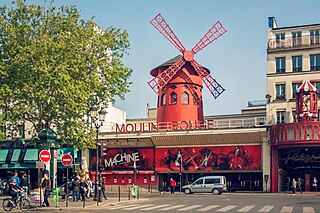
Moulin Rouge is a cabaret in Paris, on Boulevard de Clichy, at Place Blanche, the intersection of, and terminus of Rue Blanche.

Cabaret is a form of theatrical entertainment featuring music, song, dance, recitation, or drama. The performance venue might be a pub, a casino, a hotel, a restaurant, or a nightclub with a stage for performances. The audience, often dining or drinking, does not typically dance but usually sits at tables. Performances are usually introduced by a master of ceremonies or MC. The entertainment, as performed by an ensemble of actors and according to its European origins, is often oriented towards adult audiences and of a clearly underground nature. In the United States, striptease, burlesque, drag shows, or a solo vocalist with a pianist, as well as the venues which offer this entertainment, are often advertised as cabarets.

The Folies Bergère is a cabaret music hall, located in Paris, France. Located at 32 Rue Richer in the 9th Arrondissement, the Folies Bergère was built as an opera house by the architect Plumeret. It opened on 2 May 1869 as the Folies Trévise, with light entertainment including operettas, comic opera, popular songs, and gymnastics. It became the Folies Bergère on 13 September 1872, named after nearby Rue Bergère. The house was at the height of its fame and popularity from the 1890s' Belle Époque through the 1920s.

Têtu is the main LGBTQIA magazine published in France. It was subtitled in French le magazine des gays et lesbiennes until 2007, and reaffirmed itself as a men's magazine since then. As of December, 2012, its certified circulation was of 41,961 copies monthly. Publication stopped in 2015 until the magazine was reborn and issued its next issue on 28 February 2017.

Antoine Clamaran-Danzelle is a French house music producer, DJ and remixer. Clamaran was born in Neuilly-sur-Seine. In the early 1990s, his local fame interested Maximum FM, the leading parisian dance radio station at that time. Impressed by his mixing gift, Clamaran gained a huge audience and started to be booked for one off parties. But Palace headquarters asked him to run the mythical Gay Tea Dance every Sunday, instead of French icon Laurent Garnier.
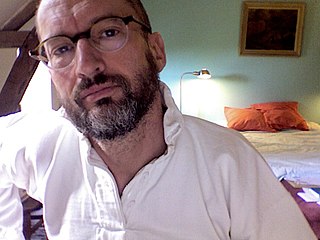
Didier Lestrade, is a French author, magazine publisher, AIDS and LGBT rights advocate.
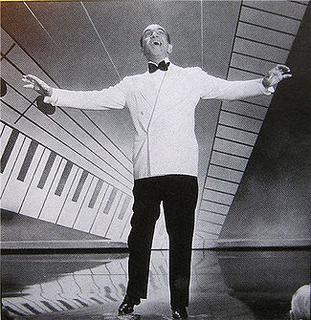
Wonder Bar is a 1934 American pre-Code film adaptation of a Broadway musical of the same name directed by Lloyd Bacon with musical numbers created by Busby Berkeley.
The culture of Paris concerns the arts, music, museums, festivals and other entertainment in Paris, the capital city of France. The city is today one of the world's leading business and cultural centers; entertainment, music, media, fashion, and the arts all contribute to its status as one of the world's major global cities.

Guy Cuevas is a Cuban-born writer, musician, and Paris disc jockey. Born Guillermo Cuevas Carrión, he worked the turntables at Club Sept, and Le Palace before becoming the artistic director, first of Les Bains Douches, then the Barrio Latino.
Fabrice Emaer (1935–1983) called "The Prince of the night" was an impresario whose nightclubs le Sept, Le Bronx and le Palace, were the premier spots in Paris nightlife in the 1970s and early 1980s, celebrated in memoirs and songs like Amanda Lear's 1979 song "Fashion Pack" which declared, "In Paris you got to be seen at Maxim's / The Palace / The 7 and then go Chez Regine."
Patti Layne is a Canadian singer/songwriter/recording artist. Patti Layne had a recording career in France from 1982–1991 and started recording again in 2009. Her first release in 1982, 'Une espèce de Canadienne' (Pathé/Campagne/Pathé-Marconi) written by Didier Barbelivien for her, was a moderate success. It was followed by an album. Several singles followed over the next few years.

"Du temps" is a 2011 dance-pop song by French singer Mylène Farmer. It was written by Farmer with a music composed by Laurent Boutonnat. The song is the first single from her second best of 2001.2011 and was released first digitally on 7 November 2011. The song was generally well received by critics, but divided Farmer's fans.
François Rousseau is a professional French painter and photographer born in 1967.

Eugénie Fougère was a French vaudeville and music hall dancer and singer. She was often called a soubrette − a flirtatious or frivolous woman − known for her eye-catching outfits, frisky movements, suggestive demeanor, and for her rendition of the popular "cakewalk dance," which in her own style included "negro" rhythms and paces. She should not be confounded with the frequenter of the French demi-monde also named Eugénie Fougère although the two knew each other, mixed in the same circles and even lived in the same street in Paris for a while.

Paris, the capital of France, has an active LGBT community. In the 1990s, 46% of the country's gay men lived in the city. As of 2004, Paris had 140 LGBT bars, clubs, hotels, restaurants, shops, and other commercial businesses. Florence Tamagne, author of "Paris: 'Resting on its Laurels'?", wrote that there is a "Gaité parisienne"; she added that Paris "competes with Berlin for the title of LGBT capital of Europe, and ranks only second behind New York for the title of LGBT capital of the world." It has France's only gayborhoods that are officially organized.

Paris Theatre, formerly Third Avenue Theatre and also known as Paris Theater or Ray's Paris Theatre, is an historic building in Portland, Oregon's Old Town Chinatown neighborhood, in the United States. The theatre was constructed in 1890 and opened as a burlesque house. It was later converted to a cinema, then a club and music venue, before serving as an adult movie theater until 2016. The building was a live venue and nightclub until it closed in October 2019.
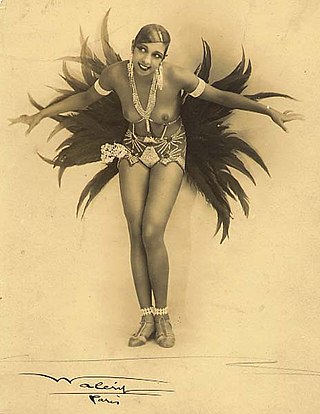
The Années folles was the decade of the 1920s in France. It was coined to describe the social, artistic, and cultural collaborations of the period. The same period is also referred to as the Roaring Twenties or the Jazz Age in the United States. In Germany, it is sometimes referred to as the Golden Twenties because of the economic boom that followed World War I.
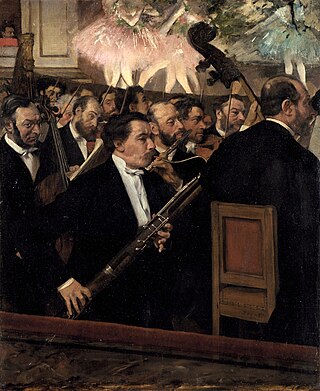
The city of Paris has been an important center for European music since the Middle Ages. It was noted for its choral music in the 12th century, for its role in the development of ballet during the Renaissance, in the 19th century it became famous for its music halls and cabarets, and in the 20th century for the first performances of the Ballets Russes, its jazz clubs, and its part in the development of serial music. Paris has been home to many important composers, including: Léonin, Pérotin, Jean-Baptiste Lully, Jean-Philippe Rameau, Christoph Willibald Gluck, Niccolò Piccinni, Frédéric Chopin, Franz Liszt, Jacques Offenbach, Georges Bizet, Claude Debussy, Maurice Ravel, Hector Berlioz, Paul Dukas, Gabriel Fauré, César Franck, Charles Gounod, Jules Massenet, Vincent d'Indy, Camille Saint-Saëns, Erik Satie, Igor Stravinsky, Sidney Bechet.

Sylvie Grumbach is the creative director and founder of 2e Bureau. She has been a fashion editor and press officer for various designers. Prior to this she worked as press attache at Le Palace, a nightclub in Paris.

Le cœur et la main is a three-act opéra comique with music by Charles Lecocq and words by Charles Nuitter and Alexandre Beaume. It was first performed on 19 October 1882 at the Théâtre de Nouveautés, Paris.

















